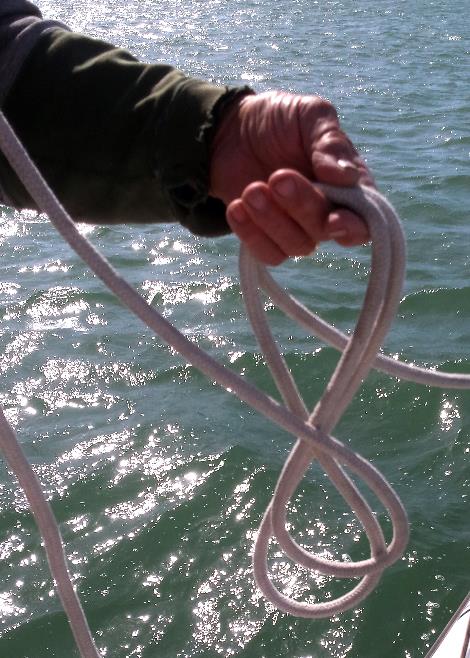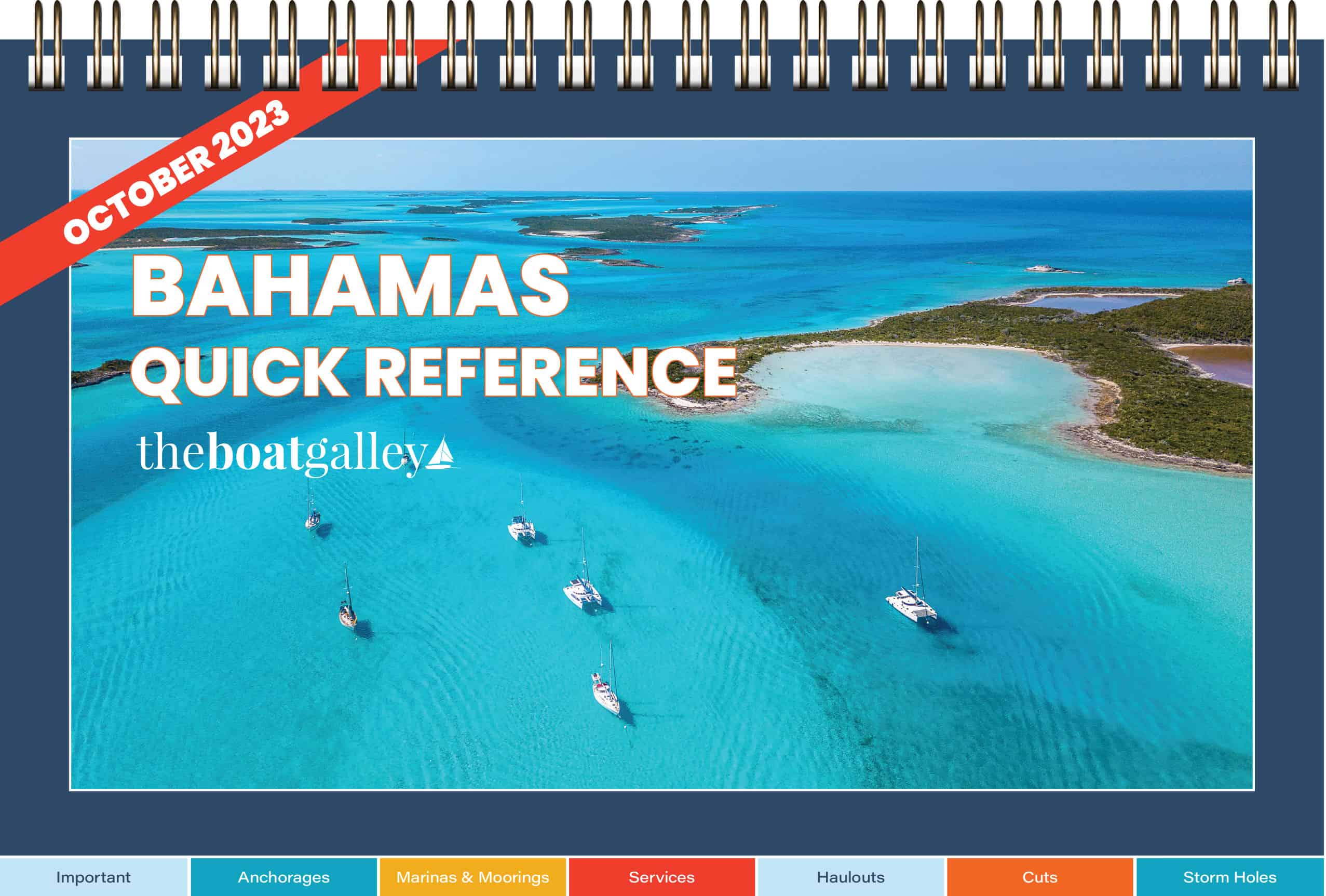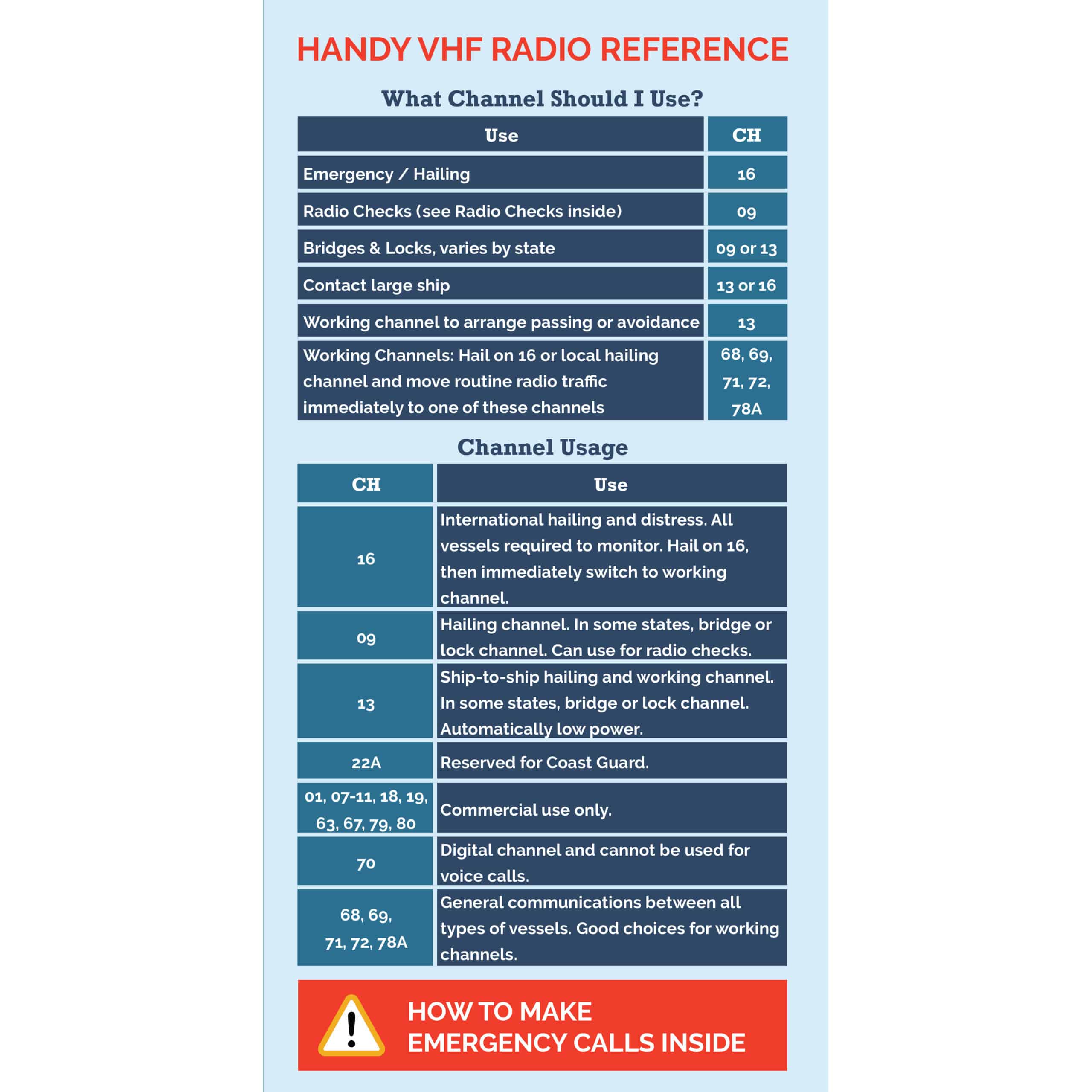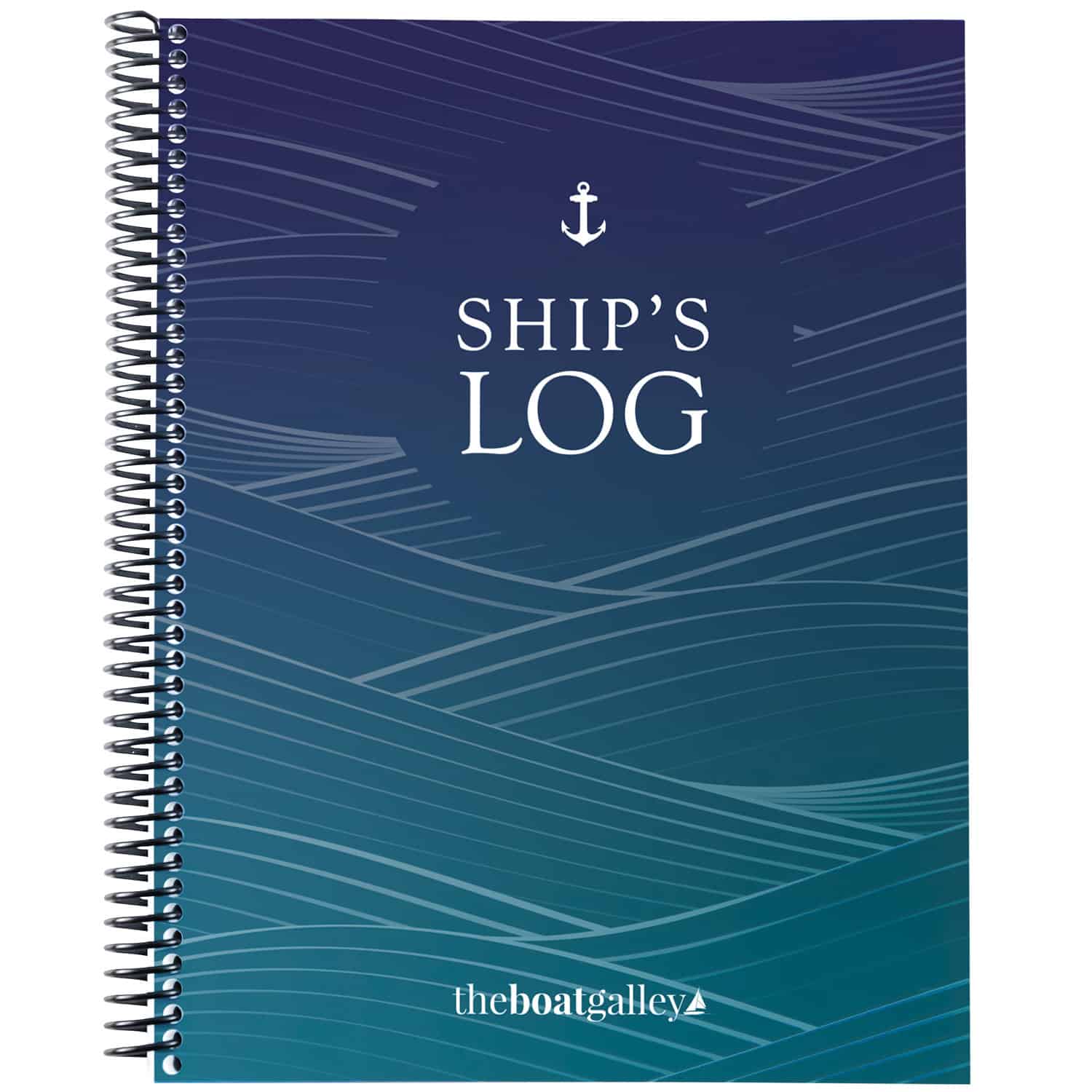Ever have to un-kink a line? Uncoil it and run your hand down it to get all the twists out?
We ran into the problem on the very first charter boat we were on — every single line aboard was kinked! The furler, the main halyard, the reef lines and probably something more that I’m forgetting. None would freely run through blocks.
We unkinked them all, then my husband showed the rest of us something he’d learned back in Sea Scouts.
To keep braided line from kinking, don’t coil it in circles — that’s what puts the twists and kinks into it.
Instead, loop it in figure 8s — that way, each loop both twists and reverses itself.

The first time we went to use Barefoot Gal‘s dinghy davits, we discovered the same problem — the lifting lines were badly kinked and it was almost impossible to pull them through the blocks to pick up the dinghy. We unreeved the lines, got the kinks out, then reeved them again taking care not to introduce twists. We always figure 8 the extra line before hanging it and haven’t had a problem since.

Quickly find anchorages, services, bridges, and more with our topic-focused, easy-to-use waterproof guides. Covering the ICW, Bahamas, Florida, and Chesapeake.
Explore All Guides

Carolyn Shearlock has lived aboard full-time for 17 years, splitting her time between a Tayana 37 monohull and a Gemini 105 catamaran. She’s cruised over 14,000 miles, from Pacific Mexico and Central America to Florida and the Bahamas, gaining firsthand experience with the joys and challenges of life on the water.
Through The Boat Galley, Carolyn has helped thousands of people explore, prepare for, and enjoy life afloat. She shares her expertise as an instructor at Cruisers University, in leading boating publications, and through her bestselling book, The Boat Galley Cookbook. She is passionate about helping others embark on their liveaboard journey—making life on the water simpler, safer, and more enjoyable.











Ritchard Findlay says
I will often drag lines behind the boat for a while to not only eliminate the kinks and twists, but also to erase any memory in the line. When you coil it back up wet, it acts much more like new line.
Dave Skolnick (S/V Auspicious) says
Okay in fresh water but not in salt. The salt crystals are very hard on the fibers.
Charles Reynolds says
There are a few other alternatives.
1. You can use three-strand twisted rope and coil continuously in the direction which tightens the lay. Obviously, you have many lines which cannot be replaced with three-strand so this is not the best solution. However, sheets, dinghy painters, anchor and mooring lines will perform just fine with three-strand twisted rope.
2. You could flake it into a bag or bucket. This has the advantage that it will pay out nicely every time you need it and the disadvantage that it’s somewhat ugly and doesn’t store belowdecks as compactly as a coil.
3. You can coil it the same way you would coil a cable or hose, alternating the twist-direction of each loop as you coil it. In my experience, this doesn’t pay out without tangling unless you have the rigidity of cable or hose.
4. You can build a simple overhand sennit. This works wonderfully and pays out nicely but doesn’t store as compact as a coil.
The figure-eight method is probably best for braided rope. These are just a list of alternatives for those cases where they may be appropriate for your needs.
Kelly Flores-New says
Just brought back memories of learning to tie square knots with your mom! 🙂
Richard Bell says
I use a method called a butterfly coil. I learned this from climbing and it made a great transition to all of the lines on a boat, both large and small diameter. Instead of trying to describe how to do it, here is video that shows the method I use. https://www.youtube.com/watch?v=R8X90k5U6vQ
It never kinks, always pays out smoothly and leaves a nice tail at the bitter end, to hang the line.
Peggy says
We always clear the kinks as we coil in a circular fashion by running it through fingers, twisting it out. Leave a bit of tail, wrap the tail at about the top third of the coil, put tail through the top third and make a hanging loop or tie it off to something (similar to hanging a fender). No problems. If you address a possible kink every time it is coiled, lines/sheets last longer.
Kathy Orr says
We’ll have to give this a try. We’ve really noticed that NEW lines kink a lot, much more than older lines.
The Boat Galley says
Yes, we’ve noticed that too.
Dennis Battern says
Thanks for the reference to Sea Scouts. I forwarded to my Sea Scouts. We have a new ship with 15 scouts in Missouri. Any words of wisdom for me or them?
Rory Stewart says
I know this yet haven’t started to do it. Will do!
Joni Goodman says
Any line that is purchased through blocks should be hanked without twists. Since I am so used to twisting, I need to hold the line overhand and slide it along the line then bring it back to the hank!
Leanne Tracey says
We have been doing this for a while now, but it did take a bit of time to get used to.
Al Wong says
I now ‘butterfly’ a line. I find it works extremely well. Mountaineers do this.
Mark says
+1 for the butterfly coiling method. It took a mere strip of a girl in a chandlery to put me right after 30 years of figure 8 coiling. Making a loop each side of your hand so the end effect is like droopy butterfly wings is like flaking a line – more reliably tangle free for storing and using.